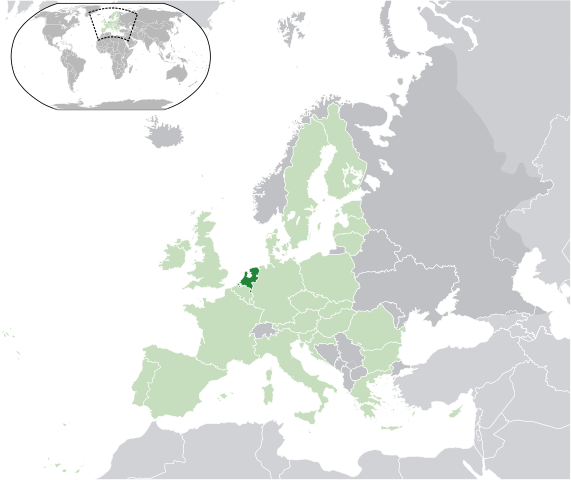Melody Petersen of the Los Angeles Times reports,
In strategy shift, CalPERS looks to cut financial risk:
California taxpayers have never paid more for public worker pensions, but it’s still not enough to cover the rising number of retirement checks written by the state’s largest pension plan.
Even before the stock market’s recent fall, staffers at the California Public Employees’ Retirement System were worried about what they call “negative cash flows.”
The shortfalls — which totaled $5 billion last year — are created when contributions from taxpayers and public employees who are still working aren’t enough to cover monthly checks sent to retirees.
To make up the difference, CalPERS must liquidate investments.
With more than $300 billion in investments, the nation’s largest public pension fund is in no danger of suddenly running out of cash.
But even its staff acknowledges in a recent report that despite fast-rising contributions from taxpayers, the pension fund faces “a significant amount of risk.”
To reduce that financial risk, CalPERS has been working for months on a plan that could cause government pension funds across the country to rethink their investment strategies.
The plan would increase payments from taxpayers even more in coming years with the goal of mitigating the severe financial pain that would happen with another recession and stock market crash.
Under the proposal, CalPERS would begin slowly moving more money into safer investments such as bonds, which aren’t usually subject to the severe losses that stocks face.
Because the more conservative investments are expected to reduce CalPERS’ future financial returns, taxpayers would have to pick up even more of the cost of workers’ pensions.
Most public workers would be exempt from paying any more. Only those workers hired in 2013 or later would have to contribute more to their retirements under the plan.
The changes would begin moving CalPERS — which provides benefits to 1.7 million employees and retirees of the state, cities and other local governments — toward a strategy used by many corporate pension plans. For years, corporate plans have been reducing their risk by trimming the amount of stocks they hold.
The plan is the result of CalPERS’ recognition that — even with significantly more contributions from taxpayers — an aggressive investment strategy can’t sustain the level of pensions promised to public workers. Instead, it could make the bill significantly worse.
At an Aug. 18 meeting, CalPERS staff members laid out their plan for the fund’s board, saying the changes would be made slowly and incrementally over the next several decades.
That isn’t fast enough for Gov. Jerry Brown. A representative from the governor’s finance department addressed the CalPERS board, saying the administration wants to see financial risks reduced “sooner rather than later.”
“We know another recession is coming,” said Eric Stern, a finance department analyst, “we just don’t know when.”
Behind the growing cash shortfalls: the aging of California’s public workforce. As more baby boomers retire, CalPERS estimates that the number of government retirees will exceed the number of working public employees in less than 10 years.
Another reason for the cash shortages: the large hike in pension benefits that state legislators voted to give public workers in 1999 when the stock market was booming.
CalPERS lobbied for those more expensive pensions. In a brochure, the fund quoted its then-president, William Crist, saying the pension-boosting legislation was “a special opportunity to restore equity among CalPERS members without it costing a dime of additional taxpayer money.”
That has turned out to be wishful thinking. Now, cities and other local governments are cutting back on street repairs and other services to pay escalating pension bills.
Chris McKenzie, executive director of the League of California Cities, said governments are in the midst of a six-year stretch in which CalPERS payments are expected to rise 50%.
Some cities are now paying pension costs that are equal to as much as 40% of an employee’s salary, according to CalPERS documents.
The cost is highest for police, fire and other public safety workers who often receive earlier and more generous retirements than other employees.
In recent years, three California cities have declared bankruptcy, in part, because of the rising costs.
McKenzie said that despite the escalating pension bills, most cities are in favor of the plan by CalPERS staff. Many city finance officials believe that CalPERS’ investment portfolio is currently “too volatile,” he said.
About 10% of cities don’t support the plan, McKenzie said. “Some said they simply can’t afford it,” he added.
Representatives from two public employee labor unions speaking at the Aug. 18 meeting said they generally supported the plan.
The plan must be approved by CalPERS’ board, which is scheduled to discuss it again in October.
Last year, governments sent CalPERS $8.8 billion in taxpayer money, while employees contributed an additional $3.8 billion, according to financial statements for CalPERS’ primary pension fund. Those combined contributions fell $5 billion short of the $17.8 billion paid to retirees.
At the heart of the plan is the gradual reduction in what CalPERS expects to earn from its investments. Currently, CalPERS assumes its average annual investment return will be 7.5% — an estimate that has long been criticized as being overly optimistic.
After several years of double-digit returns, the giant pension fund’s investments earned just 2.4% in 2014, according to preliminary numbers released in July.
Under the new plan, as CalPERS moved more money to bonds and other more conservative investments to reduce risk, the 7.5% rate would gradually be reduced.
CalPERS is still recovering from the Great Recession of 2008 and 2009, when it suffered a 24% loss on its investments.
Today its $300 billion in investments is estimated to be only about 75% of what it already owes to employees and retirees. A market downturn would create an even deeper hole.
In presentations, CalPERS told city finance officials that if its investments drop below 50% of the amount owed for pensions, even with significant additional increases from taxpayers, catching up becomes nearly impossible.
That last paragraph is sobering and I think a lot of delusional U.S. pension funds which are in much worse shape than CalPERS are already in a situation where they will never catch up and thus face very hard choices as they scramble to address their perpetual funding crisis.
Importantly, pension funding is all about matching assets with liabilities and it’s very path dependent. What this means, in a nutshell, is you’re starting point is critical. If you’re already in a pension deficit, taking on more risk investing in stocks, high yield bonds, emerging markets, or even real estate, private equity and hedge funds, you might end up digging an even bigger hole for your pension, one you’ll never climb out of.
On the investment front, CalPERS is doing what it has to do to reduce risk and stabilize the volatility of its funding level. It wisely nuked its hedge fund program which it never really took seriously and is now looking to reduce risk by increasing its exposure to bonds.
Bonds? Isn’t the Fed ready to jack up rates? Why in the world would CalPERS invest in bonds now that so many financial gurus like Paul Singer and Alan Greenspan are warning of a big bond bear market? Shouldn’t CalPERS double down here, especially after sustaining huge losses in energy investments, and just bet big on a global recovery?
No, CalPERS is doing the right thing and let me explain why. While we might be on the verge of a cyclical recovery in the global economy placing upward pressure on bond yields, make no mistake, deflationary forces are alive and well and the biggest structural risk going forward for all pensions is deflation, not inflation.
Why is deflation still a major threat? I’ve outlined six structural factors which are deflationary and bond friendly:
- The global jobs crisis: Jobs are vanishing all around the world at an alarming rate. Worse still, full employment jobs with good wages and benefits are being replaced with partial employment jobs with low wages and no benefits.
- Demographics: The aging of the population isn’t pro-growth. As people get older, they live on a fixed income, consume less, and are generally more careful with their meager savings. The fact that the unemployment rate is soaring for younger workers just adds more fuel to the fire. Without a decent job, young people cannot afford to get married, buy a house and have children.
- The global pension crisis: A common theme of this blog is how pension poverty is wreaking havoc on our economy. It’s not just the demographic shift, as people retire with little or no savings, they consume less, governments collect less sales taxes and they pay out more in social welfare costs. This is why I’m such a stickler for enhanced CPP and Social Security, a universal pension which covers everyone (provided governments get the governance and risk-sharing right).
- Rising inequality: The ultra wealthy keep getting richer and the poor keep getting poorer. Who cares? This is how it’s always been and how it will always be. Unfortunately, as Warren Buffett and other enlightened billionaires have noted, the marginal utility of an extra billion to them isn’t as useful as it can be to millions of others struggling under crushing poverty. Moreover, while Buffett and Gates talk up “The Giving Pledge”, the truth is philanthropy won’t make a dent in the trend of rising inequality which is extremely deflationary because it concentrates wealth in the hands of a few and does nothing to stimulate widespread consumption (I know, we can argue that last point but for the most part, you know I’m right).
- High and unsustainable debt in the developed world: Government and household debt levels are high and unsustainable in many developed nations. This too constrains government and personal spending and is very deflationary.
- Technology: Everyone loves shopping on-line to hunt for bargains. Technology is great in terms of keeping productivity high and prices low, but viewed over a very long period, great shifts in technology are disinflationary and some say deflationary.
Keep these six structural factors in mind the next time you hear someone warning you of the scary bond market. With all due respect to Fed Vice Chairman Stanley Fischer, inflation isn’t rebounding anytime soon and the Fed would be making a monumental mistake if it hikes rates in September thinking so. All this will do is send the mighty greenback higher, stoke a major crisis in emerging markets, and reinforce global deflation which will decimate pensions.
And when it comes to deflation, there’s only one thing which will save you, nominal bonds. Period. Nothing else will save your portfolio from the ravages of deflation, especially if it’s a virulent debt deflation spiral.
I want all of you smart senior pension officers to go back and read my analysis of HOOPP’s 2014 results and Ontario Teachers’ 2014 results. These are two of the best pension plans in the world. they’re both fully funded and instead of cutting benefits, they’re in the enviable position of increasing benefits by restoring their inflation protection.
Ron Mock, President and CEO of Teachers, told me bonds serve three functions in their portfolio: 1) they provide a negative correlation to stocks; 2) they provide return and 3) they move opposite to their liabilities. “If rates go up, our liabilities decline by a lot more than the value of our bond portfolio, which is exactly what we want to maintain the plan fully funded.” Jim Keohane, President and CEO of HOOPP, shares the exact same views.
But investing in bonds when yields are at a record low ultimately means CalPERS will have to drop its pension rate-of-return fantasy and cut its rosy investment projection of 7.5% which is uses to discount future liabilities. And it’s not just CalPERS. Most U.S. public pensions use insanely rosy investment projections. Neil Petroff, the former CIO of Ontario Teachers, once told me bluntly: “If they were using our discount rate, they’d be insolvent.”
But cutting the discount rate has implications. Your liabilities go up and you have to make hard choices as to how you will shore up your plan to make up the difference. This is where I think California and other states are going to run into major problems.
Why? Because unlike Ontario Teachers’, HOOPP and other Canadian plans, they have not implemented a shared risk plan. Read the article above. It clearly states:
But California has a huge problem with real estate taxes due to Proposition 13. A close friend of mine who lives near Stanford shared this with me on why homes are so expensive out there:
But with taxes in California already sky high, there’s no political incentive to tax people more to pay for public pensions. The exact same thing is going on elsewhere in the U.S. where public pensions are already taking a big bite out of state budgets.









